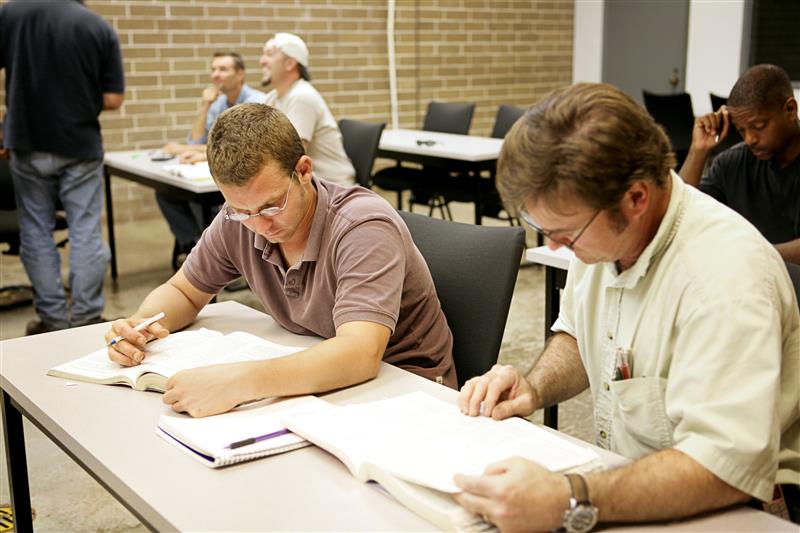By Kevin Roberts
One way to prepare for a test is with practice questions. However, it might be more valuable for the test taker to familiarize himself with practice question structure rather than to teach him the answers to possible questions. Think about that.
Let’s talk about how to use practice question structure to our advantage. But first, a little background. We live in a culture that has changed dramatically over the last several decades.
I have known a number of people of all ages who have difficulty reading. Many years ago, I tutored a neighborhood high school student in the basics of English grammar. Our own four children were all homeschooled through junior high; two attended the local high school. Two went on to tech school and two went on to college. One of the four struggles with reading to this day. It’s a fact of life. What follows does NOT refer to individuals with learning disabilities.
A recent podcast featured a college English professor who used the following to gauge the English proficiency of his freshman students. He would give them the first sentence of the Declaration of Independence and ask them to restate it in their own words.
As a refresher, here’s the first sentence:
When in the Course of human events it becomes necessary for one people to dissolve the political bands which have connected them with another, and to assume among the Powers of the earth, the separate and equal station to which the Laws of Nature and of Nature’s God entitle them, a decent respect to the opinions of mankind requires that they should declare the causes which impel them to the separation.
The college professor made two points.
First, a tiny minority of his freshman students were able to do this. Second, his investigation as to why this is informed him that some high school English teachers believed that the traditional sentence diagraming, word parsing, and grammar and syntax practice led to “a stifling of creativity”. Unfortunately, this is also the world in which we live. It would not be quite as bad if that concept was true (you gained creativity). I would be willing to give up a certain amount of basic concept drudgery to gain even a modicum of creativity. But that concept is backwards. It is by experiencing rules and restrictions through practice that creativity thrives. Give an experienced modern technician a supremely difficult repair procedure and he will likely come up with a better way. The downside of the modern attitude is that we have a few generations who often struggle with reading anything moderately difficult. The upside is that even those so indoctrinated still have in them the basic human traits needed to learn to communicate by reading and writing. Plus, they might have now the motivation that they may have lacked in junior high. They simply must overcome the deficiency of their education.
By the way, that convoluted first sentence from Thomas Jefferson simply means that if you break up with someone you should tell them why.
What does that have to do with practice questions?
Reading a practice question is like reading any other written communication that might be slightly more important than reading the Joke of the Day in your newspaper or online feed. You may need to diagram the sentence. You may need to define some of the words. You may need to recognize the individual components, starting with the nouns and verbs. This is to understand the large picture of what the sentence is saying. Yes, it takes work. But it is eminently worth it. If you have ever sent someone an email and received a reply that either bore no relationship to the idea you brought up or only addressed a small part of your original message, you have experienced the communication breakdown that I am describing.
There are two sides to this breakdown. The writer must take it upon himself the burden described in a previous article. That of being clear, unambiguous, and understandable. The reader must exercise his mind for the purpose of understanding what the writer meant. Unfortunately, this is still an oversimplification. If your purpose as the writer is to explain a principle or process about how a system on a fire truck works, then your goal is to make the grammar and syntax of the writing as simple as may be done without a loss of meaning. If, however, your purpose is to write a standard that may be used in a court of law to accuse or excuse the builder, operator, or servicer of that fire truck, the rules are much more specific and occasionally opaque to the technician who has neither a law degree nor an English literature degree. The good news is that just as a high school level English ability will allow you to read Thomas Jefferson, it will also allow you to read NFPA. It will just require more effort than reading the Joke of the Day.
That is our challenge. What is the cure? Perhaps “cure” is too strong a word, but if you follow what I am about to describe, you may find that test questions are not as scary as they seem. I will give an example of a test question then suggest particular steps that should be recognized and developed in your process of test preparation.
Practice Question
“Resistance is described by what unit in an electrical circuit?”
- Volts
- Amps
- Watts
- Ohms
Recognize the subject.
Sentences need a subject and a verb. The subject is what the sentence is about. In the realm of test questions, the subject is what topic the question is about. In this case it is about resistance.
Recognize the verb.
For the sake of this discussion, there are two types of verbs. There is 1) the normal action words and 2) the “verb of being”. In our example, the verb contains two words. The word “is” is a verb of being. Were we to remove the words “described by”, we would still have a complete sentence but one that may confuse some readers because it sounds odd. “Described” is also a verb and we commonly combine verbs in this way.
Recognize the other words in a sentence.
“What unit” provides us with information about the correct answer. It will be a unit of measure.
“In an electrical circuit” is a phrase that narrows down the topic. Friction may be a source of resistance to something but not in an electrical circuit.
The test taker will, when using practice questions diligently, familiarize himself with the structure of questions in general and take some of the mystery and worry out of this part of the test taking process.
The above is only the beginning. There is a far more important secondary result from reading this way that I am out of space to explain.
The Anatomy of a Test Question, Part 1
The Anatomy of a Test Question, Part 2






